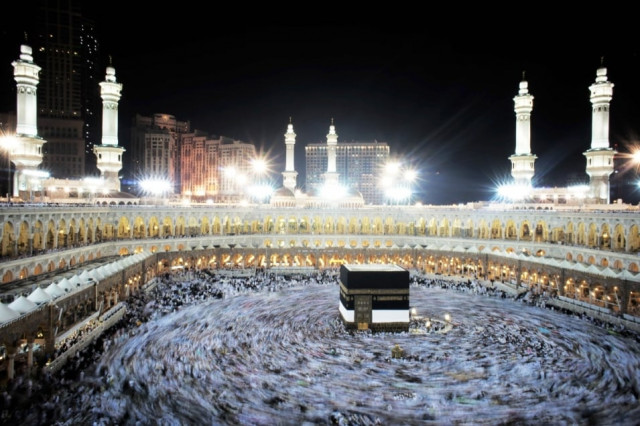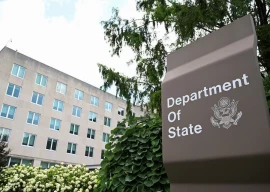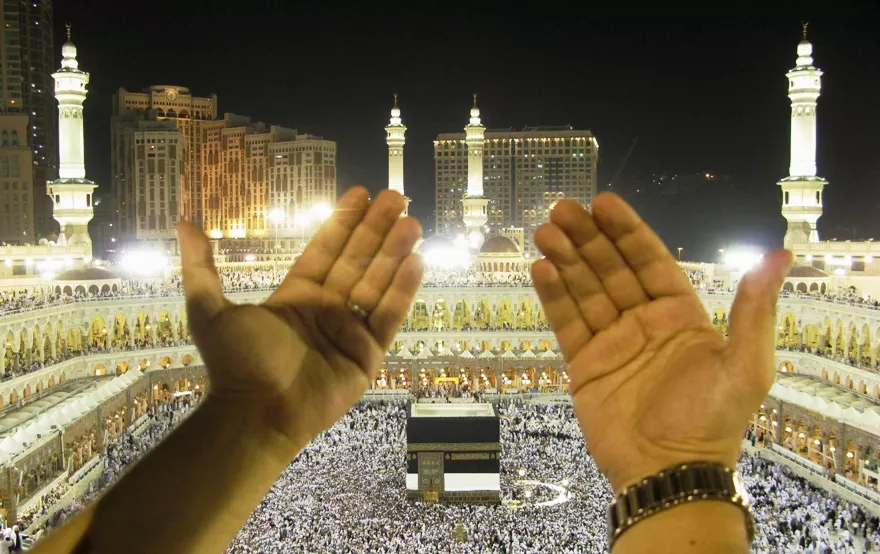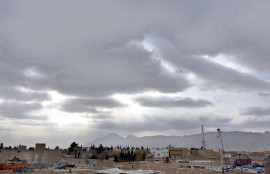
Makkah has historically lived on serving pilgrims who visit for Umra all year round, as well as for the Hajj, the world's largest annual pilgrimage that this year attracted some 2.8 million people.
The Saudi city lies in a valley, making its sacred Haram Sharif or Grand Mosque visible in its entirety only from the surrounding hills.
Makkah Royal Clock Tower
Seen from afar, the 601-metre Makkah Royal Clock Tower, topped with a gigantic four-faced clock, now rises from behind the hills and helps visitors at other holy sites locate the Haram Sharif that hosts the Kaaba.
When complete, the clock tower will be the world's second tallest building, ahead of Taiwan's 509-metre Taipei 101, but well behind the Burj Khalifa, the 828-metre skyscraper inaugurated in Dubai in January.
The skyscraper's huge clock, several times larger than London's Big Ben, is meant to set the benchmark for a pan-Islamic timing known as Makkah Time, an alternative to Greenwich Mean Time (GMT).
Hotels, complexes and malls
Visitors to the Haram Sharif can be overwhelmed by the sheer size of the Manhattan-style skyline that now crowds over the compound.
Beneath the clock, several complexes around the haram house a handful of five-star hotels, with malls featuring most high-street brands.
Pilgrims leaving the mosque are bombarded by advertisements from the facades of the tall buildings encircling the haram's plaza.
"These towers should not be around the haram," said Pakistani pilgrim Aqil Malik. "It is difficult to get to the haram. It should be an open space."
The area around the Kaaba has been expanded by consecutive development plans aimed at increasing the capacity of the mosque.
The changing landscape
Pictures of the haram from some 50 years ago show the Kaaba hosted by a modest mosque and surrounded by old neighbourhoods.
Many of these districts were razed as expansion projects boosted the mosque's capacity to a minimum of 700,000 people spread across several floors, as well as widening its plaza to some 100 metres.
Now a new expansion project ordered by King Abdullah is under way, with dozens of cranes looking down on the haram and excavation work digging deep to its north.
The developments that have mushroomed along the edge of the expanded plaza have created limited access points that can become dangerous bottlenecks as hajj pilgrims flood the mosque for collective prayers and to circle the Kaaba.
Private security guards in the malls struggled during this year's hajj as crowds overflowed from the mosque, and pilgrims occupied the corridors of shopping centres to perform their prayers instead.
Those who could afford to pay five-star hotel rates were able to take part in the collective prayers from the comfort of their panoramic terraces before dining on the same terraces with a full view of the haram.
"Makkah's heritage is being harmed," said Saqr Hamid, 30, a fabric vendor in an old Makkah souk.
"Makkah has changed. It was nicer when I was young," said the Yemeni who was born in the Western Saudi city, and whose shop in Al Hijra Street, a few hundred metres from the haram plaza, is now destined for demolition.
Hamid did not appear sad about the fate of the shabby building that houses his shop, but he believes that the new space that is created should not be filled with yet more towers and malls.
"It would be better to have the space around the haram empty, and open to all people," he said.
That is unlikely to happen. Only a street away, an entire hill is being excavated to make space for another grandiose project, whose billboard depicts a fancy avenue, a twin tower and another mall.
Safety at the expense of heritage
At other sacred sites, the authorities have significantly altered the infrastructure in an attempt to avoid the overcrowding that has caused deadly stampedes in the past.
But in making the Hajj safer, they have also erased some of its history.
Images of the site of the symbolic stoning of the devil, taken half a century ago, show a short pillar that marked one of three stoning points standing in the middle of a circle. It no longer exists in that form.
The site in a barren valley surrounded by rugged mountains is now a five-level complex. Three wide walls penetrating the structure from bottom to top were built to replace the three original modest pillars.
The new structure, which resembles a parking lot, even features a couple of helipads.
In the distance, behind the rocky hills, the new clock tower is a beacon to signal the presence of the Kaaba. The contrast between the ancient landscape and the modern structures makes the latter seem starkly out of place.





1696275825-0/image-800x600-(10)1696275825-0-270x192.webp)












COMMENTS
Comments are moderated and generally will be posted if they are on-topic and not abusive.
For more information, please see our Comments FAQ